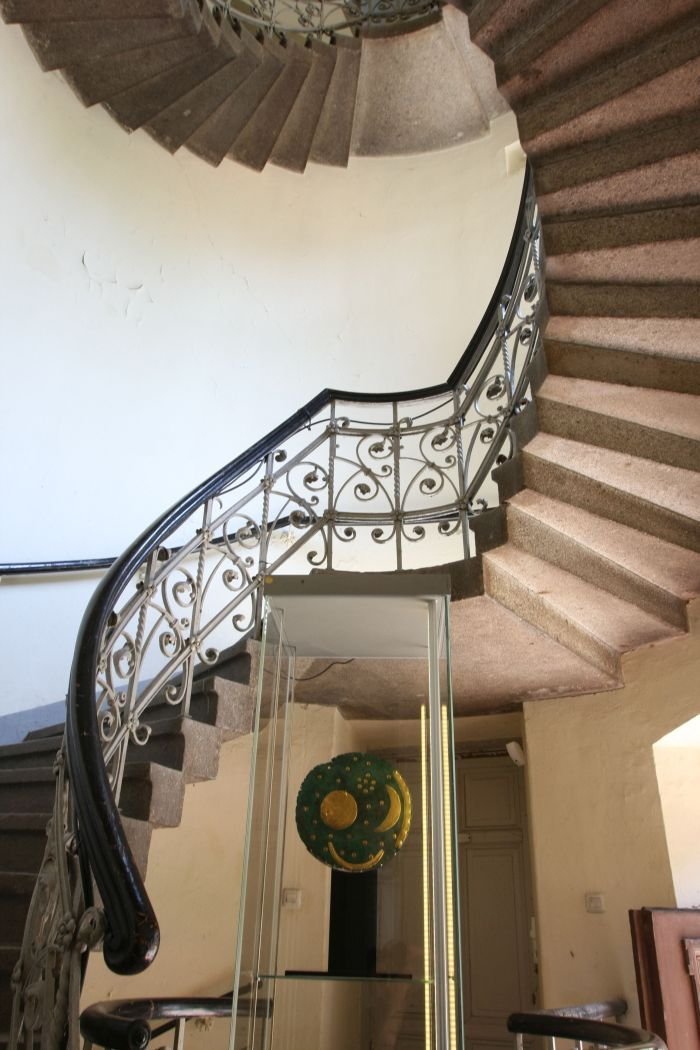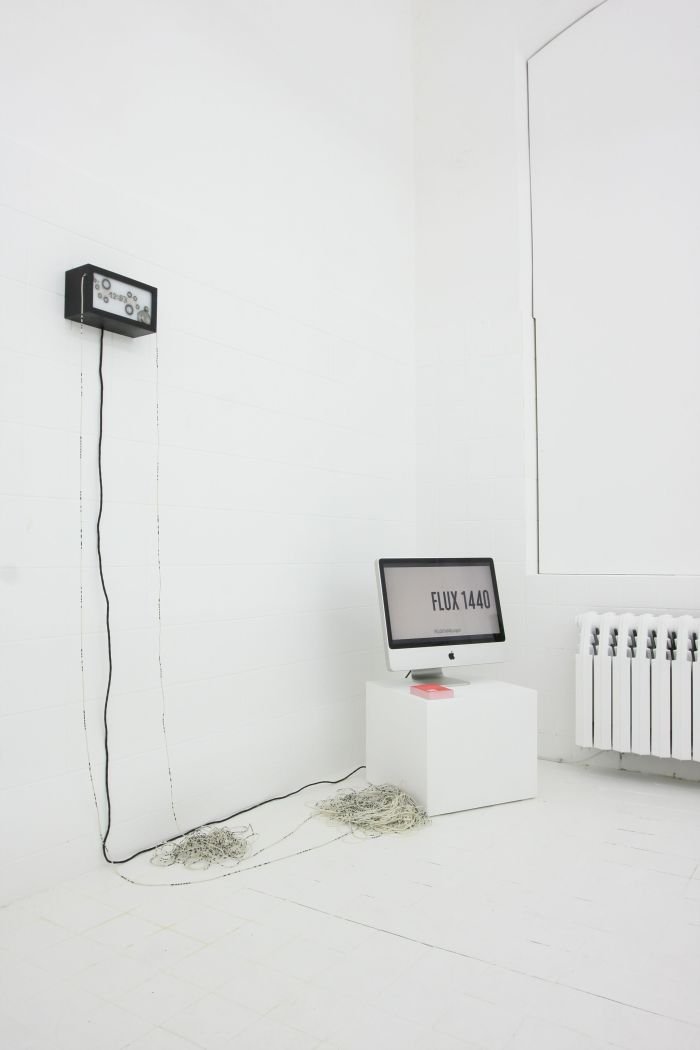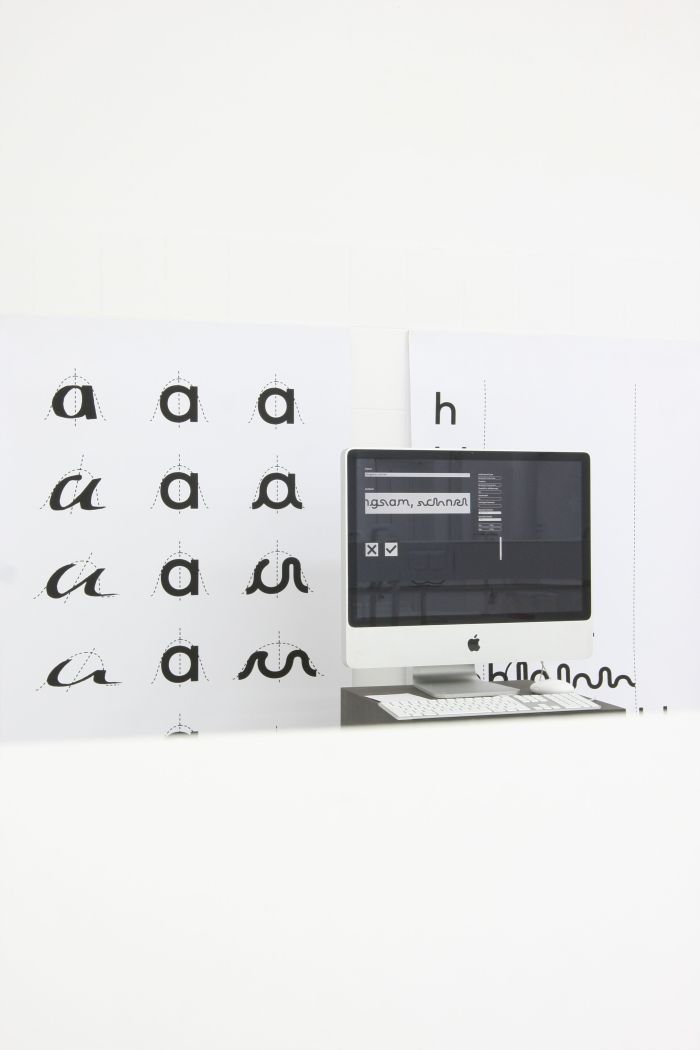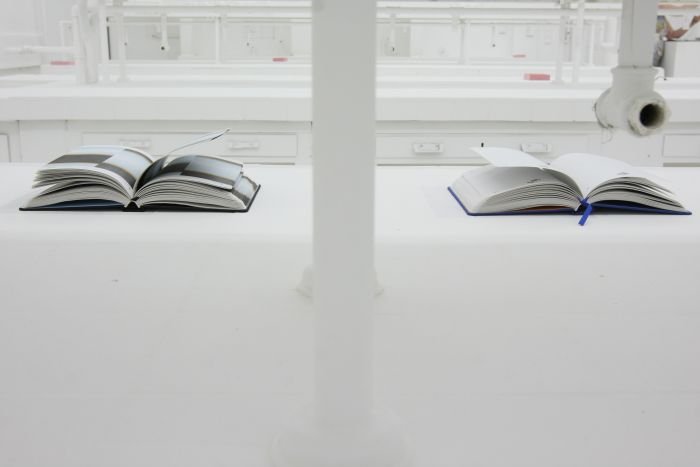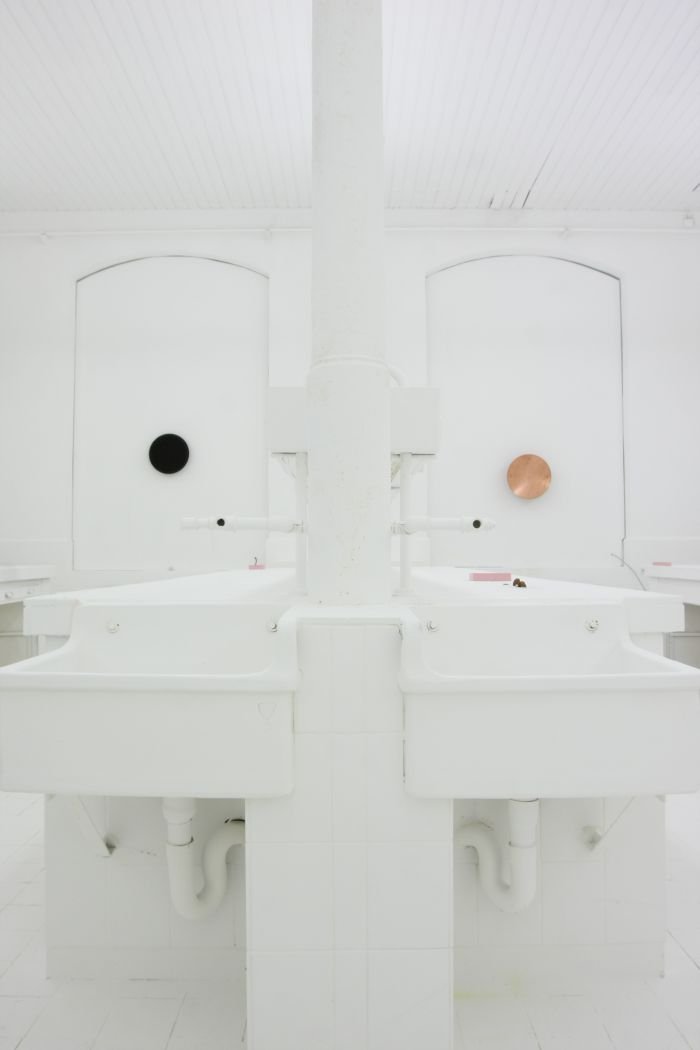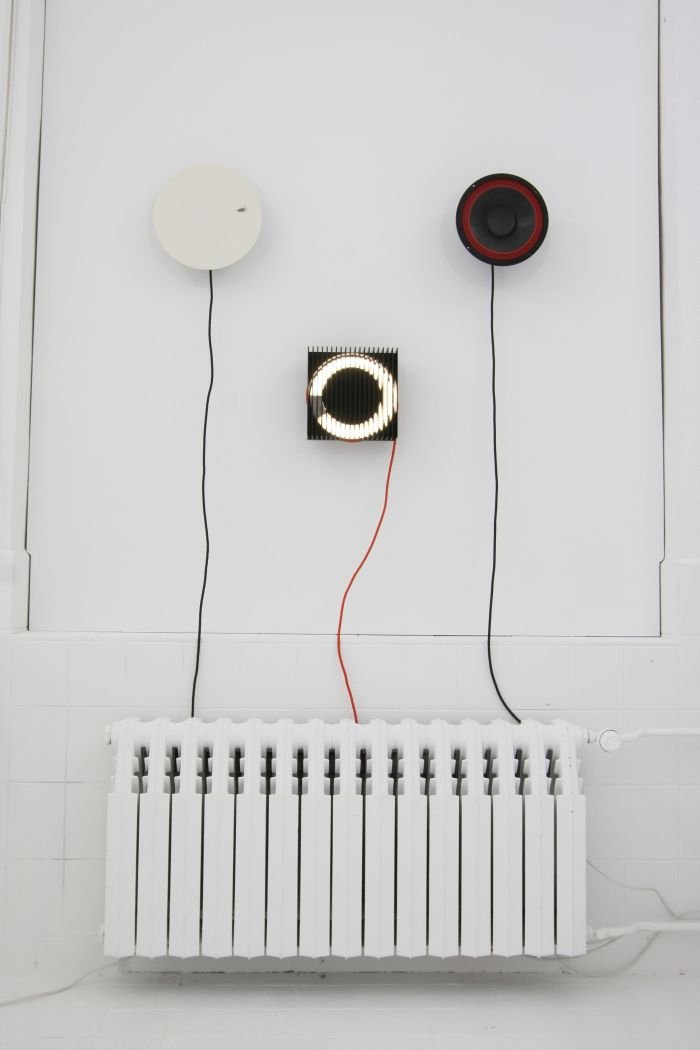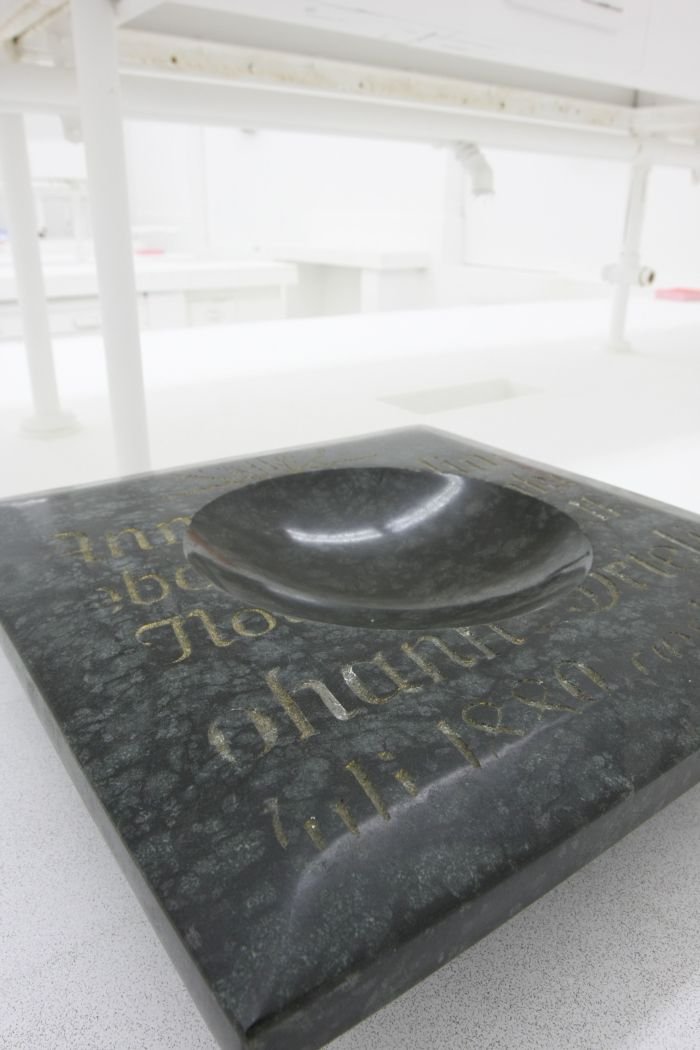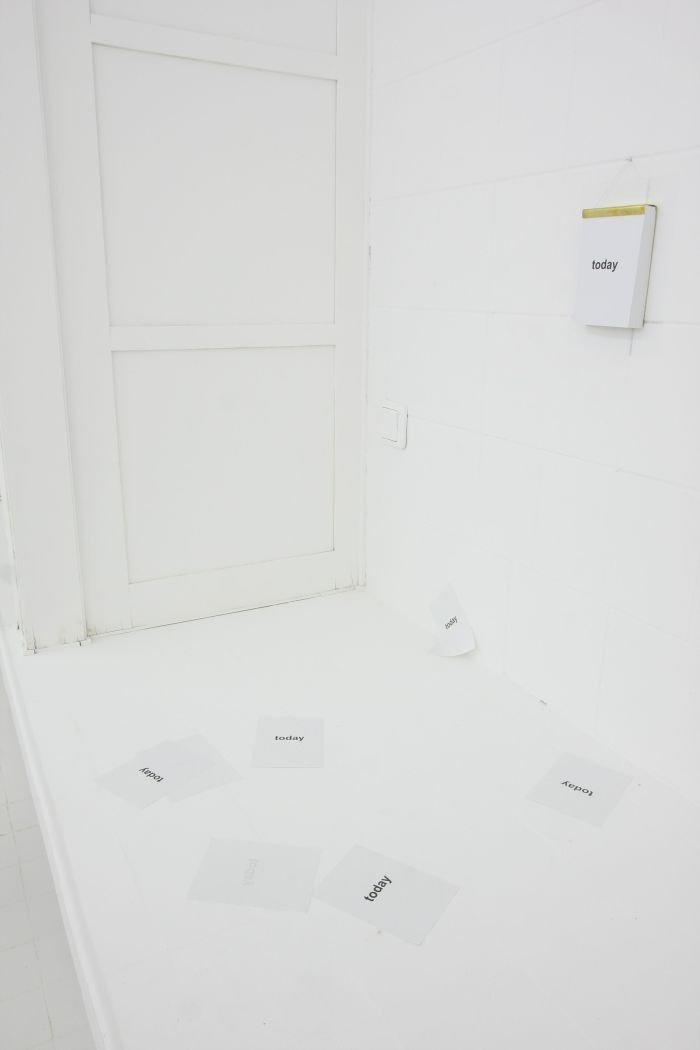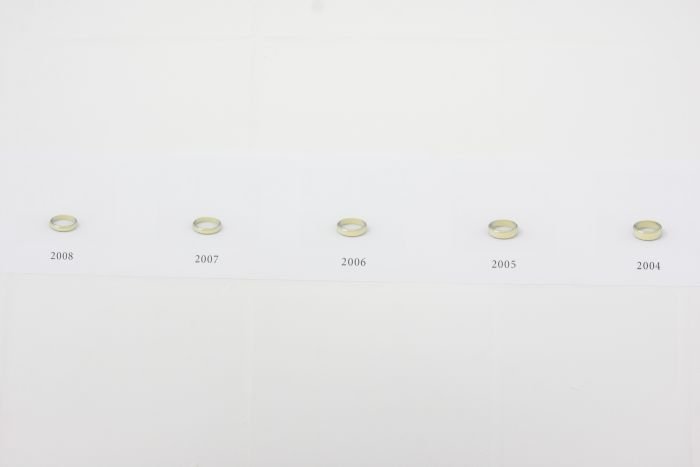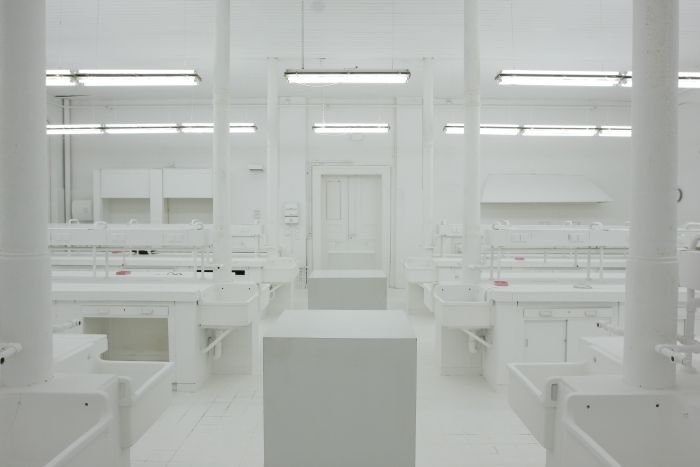'tis a curious thing time. It has accompanied our universe since the instant of its creation, has allowed for the development of our civil and social society, is the bedrock of our economic, industrial and commercial systems, guides us through every day, week, month, year, life.
Yet it is questionable if it actually exists.
And if it does exist. In what form? How can we visualise and document it? Does it have an inherent value?
Clues towards some possible answers are provided by the Designpreis Halle 2017 exhibition.
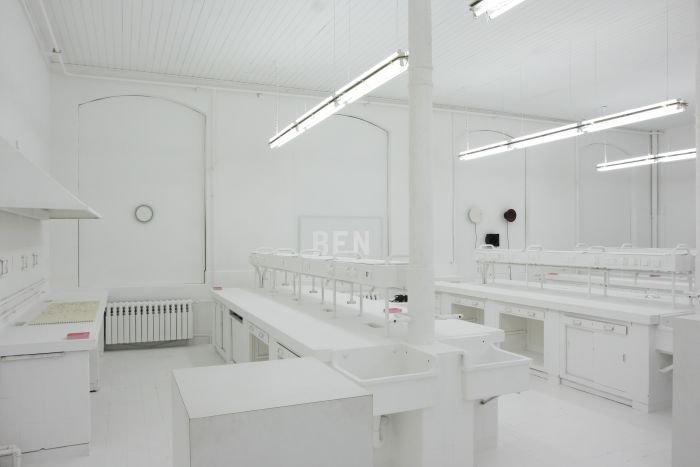
Initiated in 2007 by Halle city council, local business associations and the Burg Giebichenstein Kunsthochschule, the Designpreis Halle is an international triennial contest for designers under the age of 40, open to works of any design genre, but works which first and foremost, tackle and respond to the edition's theme: following electricity in the first edition, and laterally travel and water, the fourth edition concerns itself with the manifold of time.
The 2017 Designpreis Halle received some 375 entries from designers in 31 countries from which the jury under the stewardship of design journalist Thomas Edelmann, and featuring amongst its number smow blog regulars of the calibre of designer/producer Nils Holger Moormann, designer and UdK Berlin Professor Axel Kufus and Kunstgewerbemuseum Dresden Director Tulga Beyerle, selected a short list of 15 nominees, and ultimately 3 winners.
Until Sunday June 11th all fifteen nominated projects can be viewed in the decaying grandeur of the former Halle University Physical Chemistry Institute.
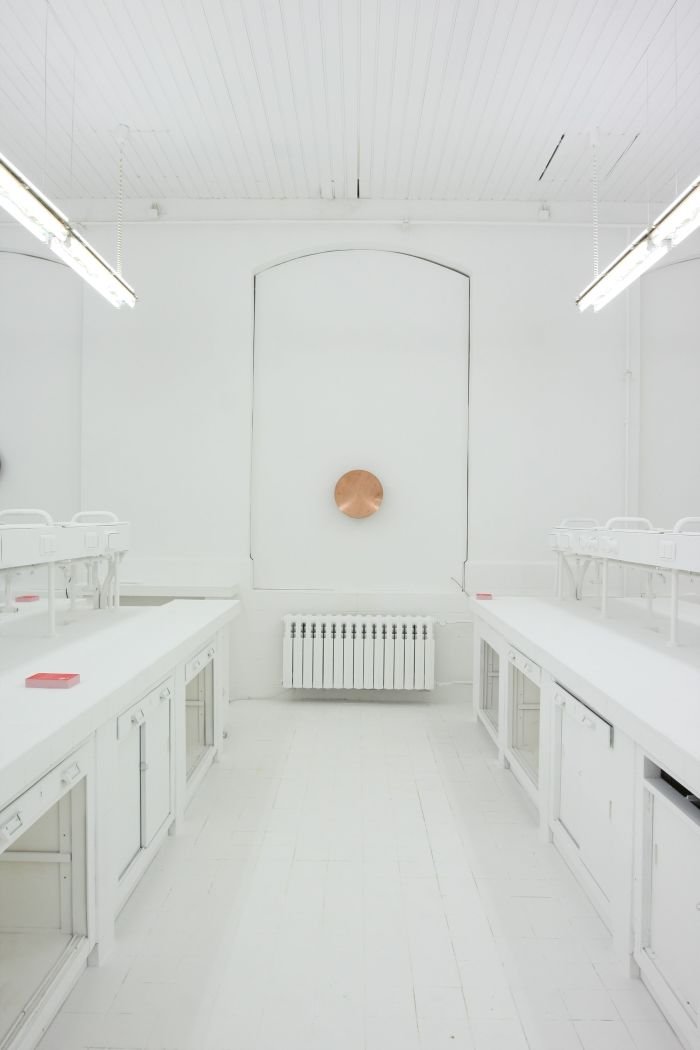
Presenting a very pleasing mix of technical, craft, theoretical and practical projects, the 2017 Designpreis Halle exhibition neatly underscores one of those aspects that makes the Designpreis Halle for us such a joy: it deals responsibly with the design term, gives it room to breath, while never allowing itself to become distracted by the whistles and bells of those who seek to exploit "design" for their own ends. Underscores that design is a way of seeing the world, a way of understanding the world, a way of approaching the world, and thereby a problem solving process. Design can, should and must develop products to make our days easier and more pleasurable. Design can, should and must also criticise, analyse, question and not only propose alternative realities, but realise them.
Arguably design is at its best when it achieves all that in one object.
We're not going to claim we were enamoured by all 15 nominations, and we hope you would disbelieve us and laugh us out of the arena were we to, a few however did very much catch our attention and imagination.
Calendar with a special mechanism by Moritz Jähde is essentially a standard tear-off calendar, albeit one which accepts and understands that you're going to forget to: and so not only does the tearing off for you, but simply informs you that it is now "today". And thus is a nice reminder that measuring time isn't necessarily as important for us as we often assume it to be. And so maybe we should be a little more relaxed about it, let the days flow.
For her project 1059 Burg Giebichenstein student Lisa Marie Quester rolled strips of paper into cocoons. Hundreds of them. Potentially 1059. And subsequently laid them out as a model "carpet". Why? Because through the concentrated, continuous, repetitive task Lisa finds calm. Time for herself. And thus retreat from the contemporary pressures of others defining how and where you spend and use your time. Reclaiming time for herself. And by extrapolation us all.
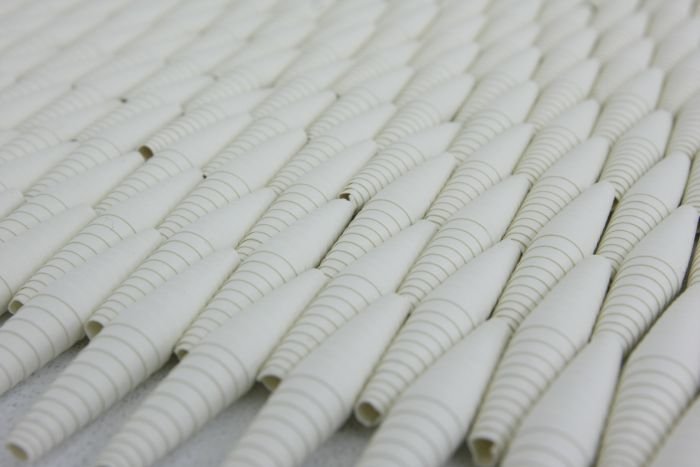
The Roman philosopher Seneca was firmly of the opinion life isn't short, we just waste most of it, focussing as we do on worthless pursuits. Without wanting to detract from Seneca's fine thinking, one thing we all do far too often is check the time. Wasting time, through time. With his Albert Clock Marseille based designer Axel Schindlbeck presents time as arithmetic, makes us solve equations in order to decipher the time, and in doing so challenges us to consider how important knowing the time really is. Are we prepared to work for it? If not why do we keep checking our watches? In addition the Albert Clock comes with the obvious bonus that if we do continue checking the time, our arithmetic will improve through the constant practice. A state of affairs of which we are sure Seneca would approve.
A particular joy of the 2017 Designpreis Halle exhibition for us was a wiedersehen with Es liegt was in der Luft by Patrick Palcic, a project which measures the passing of time through a sequence of scents, and a project which remains the genuine joy it was when we first saw it back in Cologne, where it rightly found a place in our IMM Cologne High Five!
The jury however were most taken by Flux 1440 by Hochschule für Gestaltung, HfG, Karlsruhe graduate Felix Vorreiter, awarding it as they did, first prize. A nice interplay of digital and analogue, Flux 1440 features a marked, if you will, coded, 1.2km long piece of string which is pulled through a clock-like, and clockwork-esque, housing. Every 60 seconds the marks on the string line up to note another minute reached, and that in the visual manner of a digital clock. Particularly pleasing is the way the length of the string visualises the endlessness of time, while through the complexity of the system developed in order to realise a very naive, basic, presentation of the time, Flux 1440 warmly mocks us for even caring about what time it is.
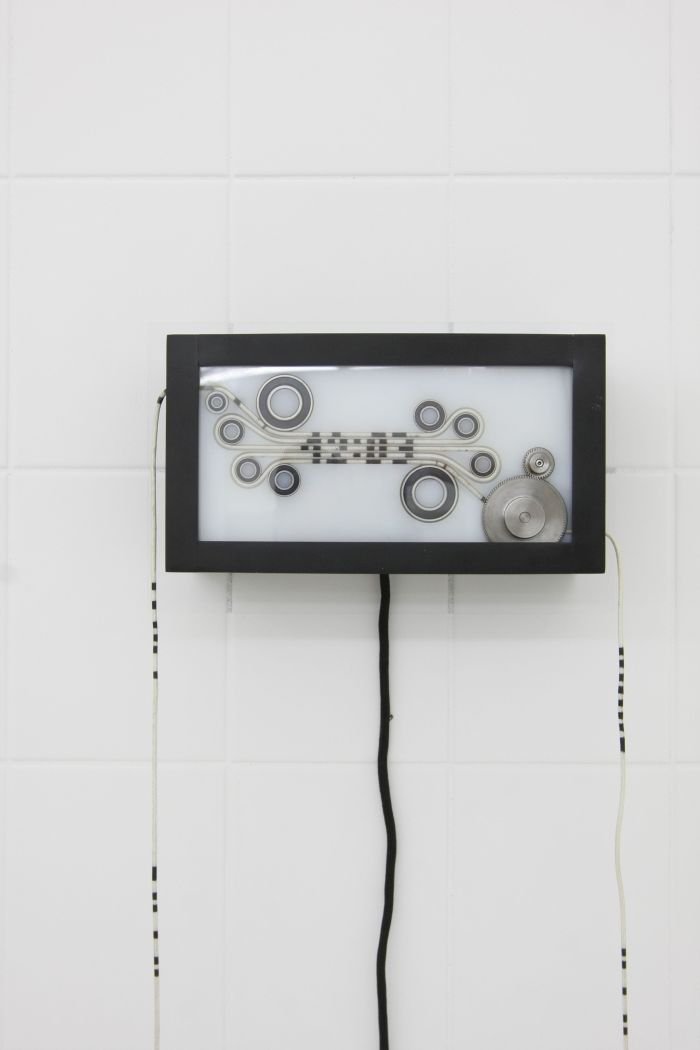
The Hallenser Physical Chemistry Institute closed in 2010 and since then the rooms have lain empty. For the Designpreis Halle exhibition curator Vincenz Warnke presents a former laboratory in a clinical, sterile, white. As in everywhere. From floor to ceiling, every vertical, horizontal and diagonal surface is white. And thus a scenography highly reminiscent of the manner in which film-makers represent advanced societies in a future so far ahead that we can barely imagine such a year will ever be reached. In a reality which being unreachable is thus eternal, timeless, even though it never existed. The decision for the clinical white standing both in a nice contrast to the run-down state of the building, where time has left its scars, and also is a much more pleasing solution than the somewhat easier option of extending the surrounding decay into the exhibition space.
It also has the advantage that having viewed the exhibition and taken yourself back out into the streets of Halle, one can much better appreciate how attractive and charming the city is. We've said it before, will say it again, and fear we will still be saying it on our death beds, Vienna is what Halle should be. Technically what Halle is. Under the dust, dust which time has caused to settle on many of the city's buildings. And some of which we suspect has been there since the Napoleonic wars.
Time of course doesn't leave scares. Time doesn't lead to decay. Time doesn't let dust settle. Time doesn't heal wounds. Time doesn't bring change. Our actions and decisions do. Time is but an easy, and mute, scapegoat.
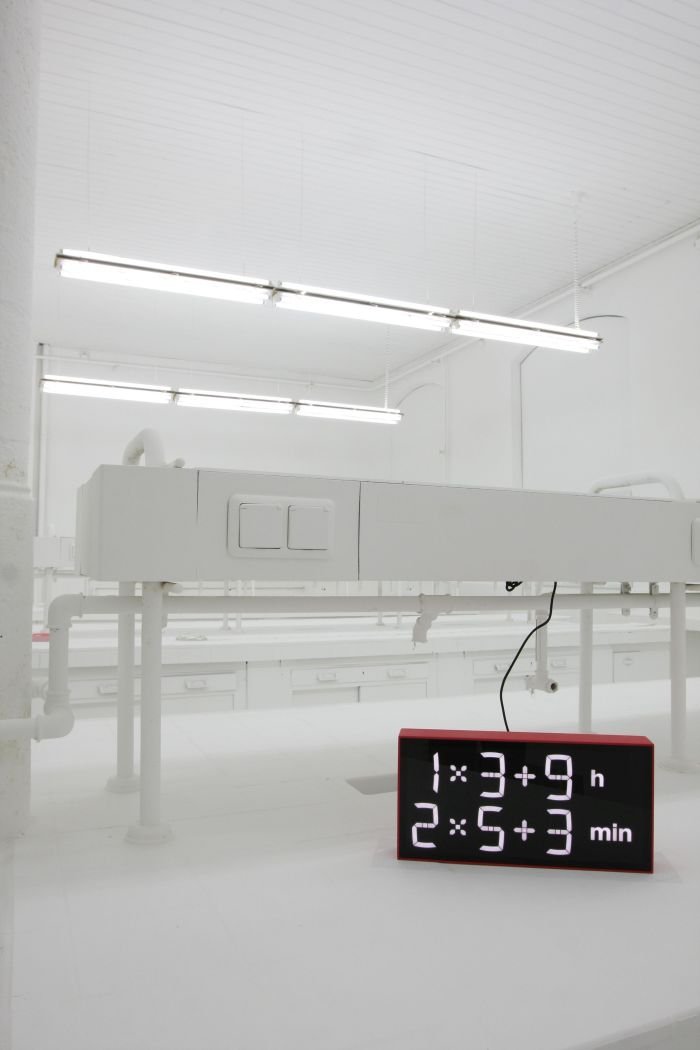
As with natural landscapes or family, over the centuries we have become proficient at creating artificial constructions to enable us to order and comprehend time. And just as through the associations we ourselves form, "countryside" and "family" receive an emotional importance far beyond the physical reality, so to has time become something fundamental, essential, to us. Dumb is that through social, cultural and technical evolution and progress, the foundations on which our constructions are based constantly change. In our current age globalisation, digitalisation and international terrorism would arguably be the key drivers of such change. And in response to such changes we instinctively create even more complicated constructions to help us chase time, for fear of losing it.
And so perhaps the most important lesson from the 2017 Designpreis Halle exhibition is that through learning to look at time from different perspectives, with alternative understandings, and without necessarily expecting answers, we can develop more natural, rational, sustainable relationships with time.
Because whether it exists or not. It's not about to end.
The Designpreis Halle 2017 exhibition can be viewed at the former Physical Chemistry Institute of the Martin-Luther-Universität Halle-Wittenberg, Mühlpförte 1, 06108 Halle (Saale) until Sunday June 11th.
Full details, including the full nominee list and information on the accompanying fringe programme can be found at http://designpreis-halle.de/
1st Prize: Flux 1440 by Felix Vorreiter, Karlsruhe
2nd Prize: Albert Clock by Axel Schindlbeck, Marseille
3rd Prize: Agil – concept for an interactive typeface by Charlotte Lengersdorf, London
